39 in the markets for the factors of production in the circular-flow diagram,
In a market economy, households are the biggest owners of the factors of production. They own all the labour and entrepreneurship as well as the capital and natural resources (land). Even though businesses own the capital goods (buildings, factories, tools and machines), these businesses are, in turn, owned by households through the shares they ... TYPES OF MARKET IN THE CIRCULAR FLOW MODEL There are four main types of market The goods and services market. The resource market. The money market. The foreign exchange market. THE GOODS AND SERVICES MARKET This is where producers sell finished goods and services to consumers. Consumers buy goods and services
The circular flow diagram is a basic model used in economics to show how an economy functions. Primarily, it looks at the way money, goods, and services move throughout the economy. In the diagram,...

In the markets for the factors of production in the circular-flow diagram,
The circular flow diagram or circular flow model is a graphical representation of the flows of goods and money between two distinct parts of the economy market for goods and services where households purchase goods and services from firms in exchange for money market for factors of production. The circular-flow diagram (or circular-flow model) is a graphical representation of the flows of goods and money between two distinct parts of the economy: -market for goods and services, where households purchase goods and services from firms in exchange for money; Firms use these factors in their production. The circular flow diagram is a visual model of the economy that shows how dollars flow through markets among households and firms. It illustrates the interdependence of the "flows," or activities, that occur in the economy, such as the production of goods and services (or the "output" of the economy) and the income generated from that production.
In the markets for the factors of production in the circular-flow diagram,. The circular-flow diagram illustrates that, in markets for the factors of production, a. households are sellers, and firms are buyers. b. households are buyers, and firms are sellers. c. households and firms are both buyers. d. households and firms are both sellers. The circular-flow diagram illustrates that in markets for the factors of production. In the circular-flow diagram who supplies factors of production in exchange for income. Households and firms are both buyers. Read: Endress And Hauser Vortex Flow Meter The circular-flow diagram illustrates that in markets for the factors of production a. Definition: A Circular flow model of the economy is a graphical representation of the movement of money between three sectors - businesses, households, and the government - and three markets - production factors, products, and the financial market. The circular-flow diagram simplifies the economy by including only two types of decision makers: firms and households. Firms produce goods and services using inputs, such as labor, land, and capital. These inputs are called the factors of production.
In the markets for factors of production in the circular-flow diagram, a. households provide firms with labor, land, and capital. b. households provide firms with savings for investment. c. firms provide households with goods and services. d. firms provide households with profit. Which markets are represented in the simple circular-flow diagram. Markets for the factors of production such as labor capital natural resources and entrepreneurial ability. In the markets for the factors of production households are sellers and firms are buyers. The Circular Flow Model The circular flow model illustrates the economic relationships among all players in the economy: households, firms, the factors market, the goods-and-services market, government, and foreign trade. In the macroeconomy, spending must always equal income. The circular flow model is a diagram illustrating the flow of ... The circular flow model of the economy distills the idea outlined above and shows the flow of money and goods and services in a capitalist economy. The economy can be thought of as two cycles moving in opposite directions. In one direction, we see goods and services flowing from individuals to businesses and back again. This represents the idea ...
A Circular flow model of the economy is a graphical representation of the movement of money between three sectors businesses households and the government and three markets production factors products and the financial market. Technological factors that influence crop yields in Australia and across the world eg. Market for factor of production The circular flow diagram displays the relationship of resources and money between firms and households. Every adult individual understands its basic structure from personal experience. Firms employ workers, who spend their income on goods produced by the firms. B) receive income from the sale of factors in the goods markets. C) pay firms for the use of their factors. D) receive income from producers for the use of factors in the factor markets. Answer: D Topic: Circular Flow, Aggregate Expenditure Skill: Conceptual 5) In the circular flow diagram, aggregate expendi-ture includes the sum of A) saving ... c.firms are sellers in the markets for factors of production and in the markets for goods and services. d.dollars that are spent on goods and services flow directly from firms to households b.households are sellers in the markets for the factors of production. In the circular-flow diagram, a.profit flows from households to firms. b.labor flows from households to firms. c.services flow from ...
_____1. The circular flow diagram would classify the Pittsburgh Symphony as a firm. True - they produce a service, and sell it in the goods and services market. (Non-profits can be firms too) _____2. In the circular flow diagram, factors of production are traded in the product market. False - they are traded in factor markets. _____3.
One of the main basic models taught in economics is the circular-flow model, which describes the flow of money and products throughout the economy in a very simplified way. The model represents all of the actors in an economy as either households or firms (companies), and it divides markets into two categories: Markets for goods and services
Transcribed image text: QUESTION 6 In the markets for the factors of production in the circular-flow diagram, households are buyers and firms are sellers. O True O False QUESTION 7 While the production possibilities frontier is a useful model, it cannot be used to illustrate economic growth.

The Following Diagram Presents A Circular Flow Model Of A Simple Economy The Outer Set Of Arrows In Green Shows The Flow Of Dollars And The Inner Set Of Arrows Shown In Red
Circular-flow diagram | Policonomics The circular-flow diagram (or circular-flow model) is a graphical representation of the flows of goods and money between two distinct parts of the economy: -market for goods and services, where households purchase goods and services from firms in exchange for money;
In the circular flow diagram, market K represents A) households. B) product markets. C) firms. D) factor markets. Answer: D Diff: 2 Page Ref: 52-53/52-53 ... the flow of goods and the flow of factors of production B) the flow of costs and the flow of revenue C) the flow of income earned from the sale of resources and the flow of expenditures on ...

The Circular Flow Diagram Illustrates That In Markets For The Factors Of Production Wiring Site Resource
The circular-flow diagram illustrates that, in markets for the factors of production, a. households are sellers, and firms are buyers. b. households are buyers, and firms are sellers. c. households and firms are both buyers. d. households and firms are both sellers. Step-by-step solution.

The Circular Flow Model The Following Diagram Presents A Circular Flow Model Of A Simple Economy The Outer Homeworklib
in the circular flow diagram with government, what does the government receive from factor markets factors of production As the price of a good or service increases, consumers will purchase a lower quantity of that good or service due, in part, to the fact that consumers cannot afford the same quantity of a good or service at a higher price.
In the markets for the factors of production, households are sellers and firms are buyers. In these markets, households provide firms the inputs that the firms use to produce goods and services. The circular flow diagram offers a simple way of organizing all the economic transactions that occur between households and firms in the economy.
A simplified circular flow model illustrates how goods and services are exchanged in free markets. Like any economic model, the circular flow model is a simplification of reality. The circular flow model shown in Figure 2.3 illustrates exchanges in two markets, the product market and the factor market.

The Following Diagram Presents A Circular Flow Model Of A Simple Economy The Outer Set Of Arrows In Green Shows The Flow Of Dollars And The Inner Set Of Arrows In Red
Simple circular flow model with two participants and two markets Factor market The factor market is the market in which the factors of production are bought and sold. It is through this market that households supply businesses with the factors of production, in exchange for an income in the form of wages and salaries, interest, rent and profits.
Circular flow diagram shows how income flows in an economy between households, firms and government in product markets, factors of production markets and financial markets. An economy is all about satisfying the coincidence of wants of different people. Because we aren't self-sufficient, we specialize in activities in which we are best at.
The circular flow diagram is a visual model of the economy that shows how dollars flow through markets among households and firms. It illustrates the interdependence of the "flows," or activities, that occur in the economy, such as the production of goods and services (or the "output" of the economy) and the income generated from that production.
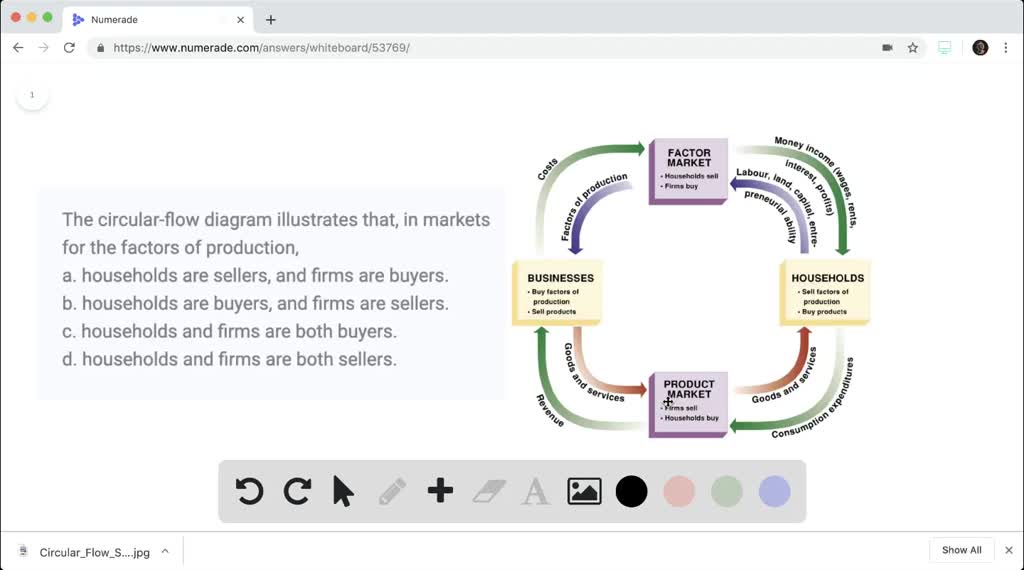
Solved The Circular Flow Diagram Illustrates That In Markets For The Factors Of Production A Households Are Sellers And Firms Are Buyers B Households Are Buyers And Firms Are Sellers C Households And Firms
The circular-flow diagram (or circular-flow model) is a graphical representation of the flows of goods and money between two distinct parts of the economy: -market for goods and services, where households purchase goods and services from firms in exchange for money; Firms use these factors in their production.
The circular flow diagram or circular flow model is a graphical representation of the flows of goods and money between two distinct parts of the economy market for goods and services where households purchase goods and services from firms in exchange for money market for factors of production.

0 Our First Model The Circular Flow Diagram A Way To Organize The Economic Transactions Decisions Of 2 Decision Makers Households Firms Businesses Ppt Download

The Following Diagram Presents A Circular Flow Model Of A Simple Economy The Outer Set Of Arrows Shown In Green Shows The Flow Of Dollars And The Inner Set Of Arrows Shown
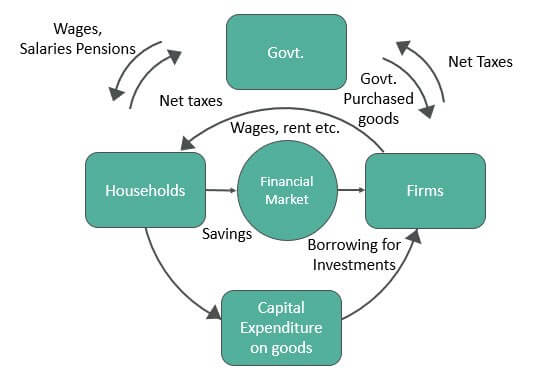

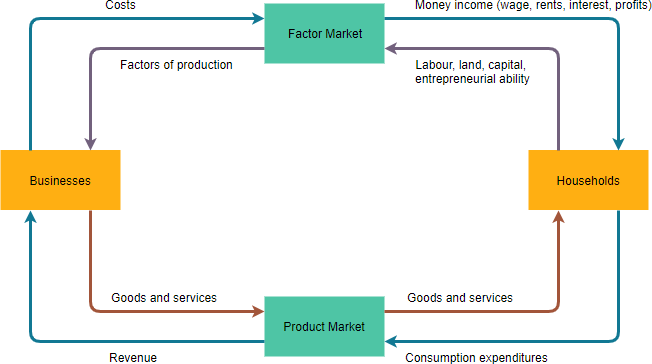

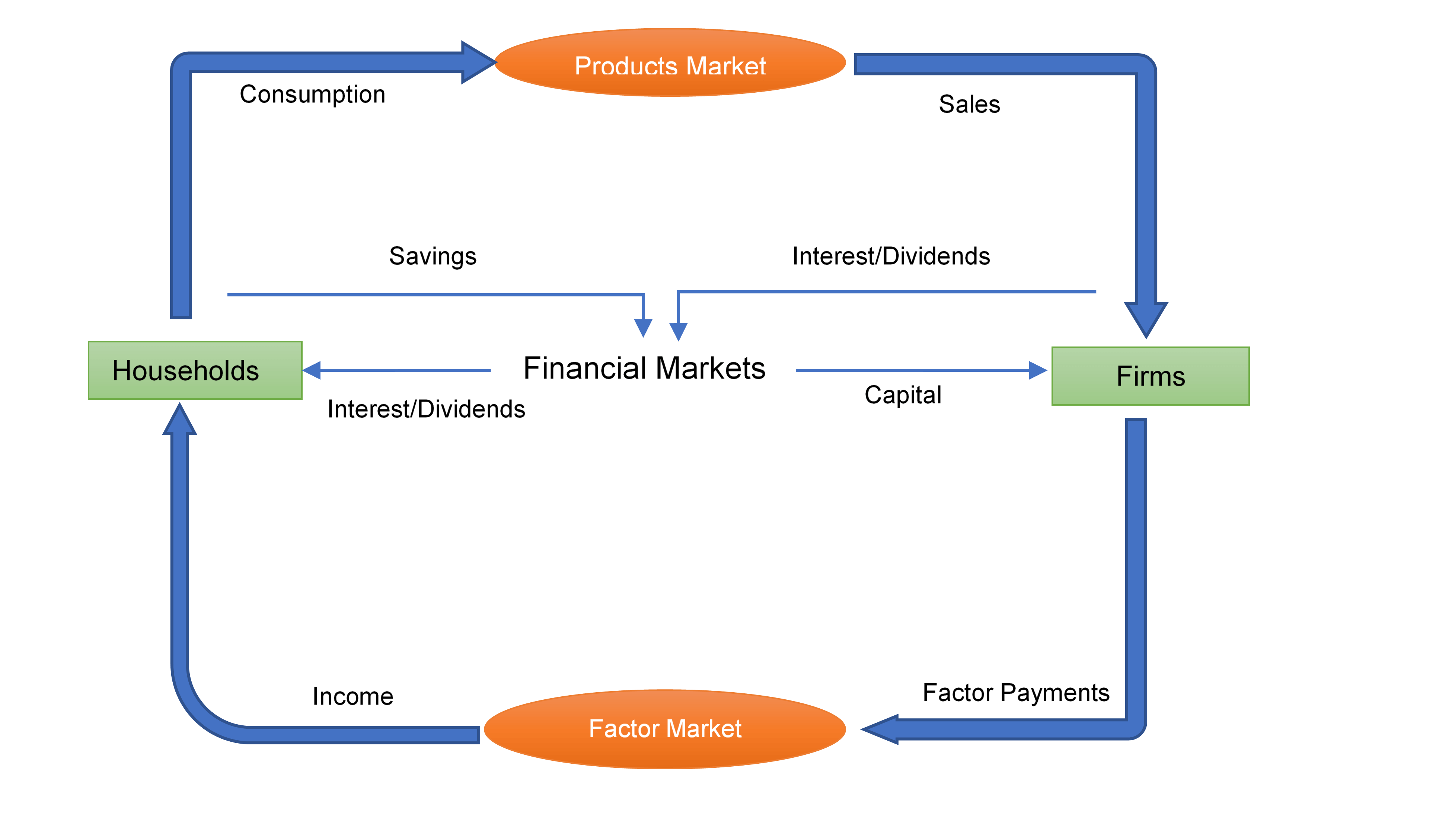


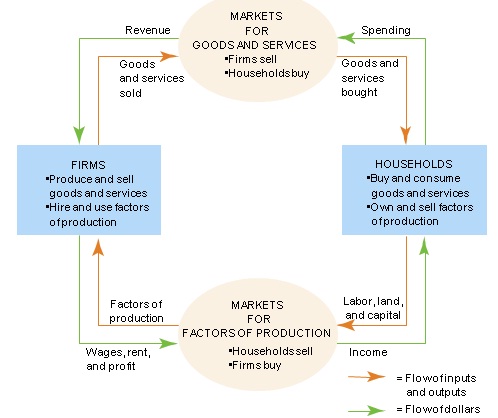

/Circular-Flow-Model-1-590226cd3df78c5456a6ddf4.jpg)
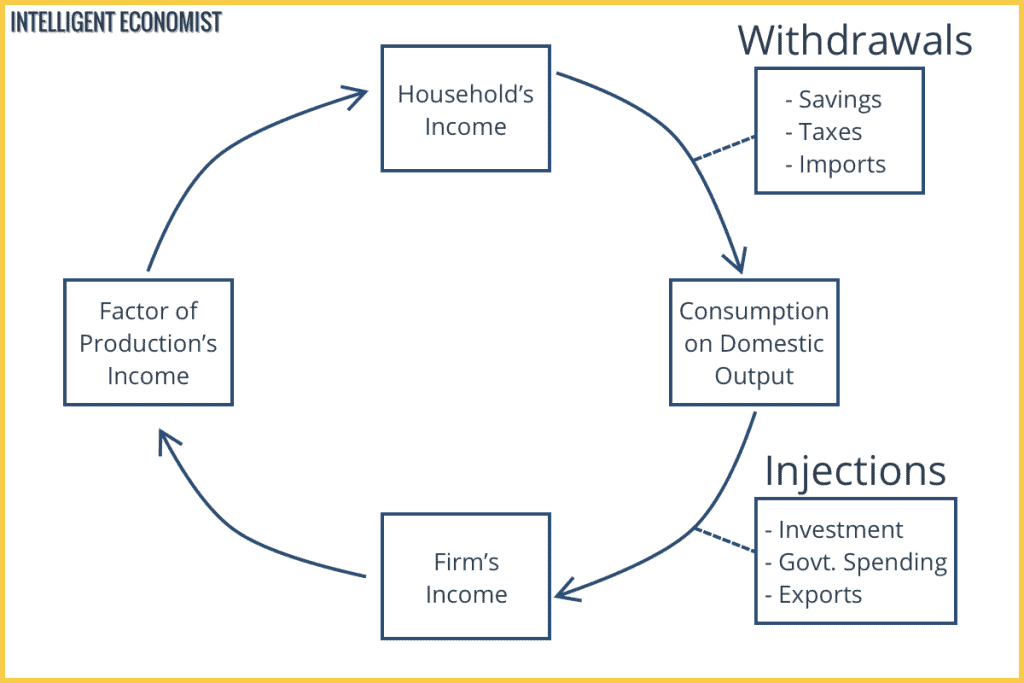


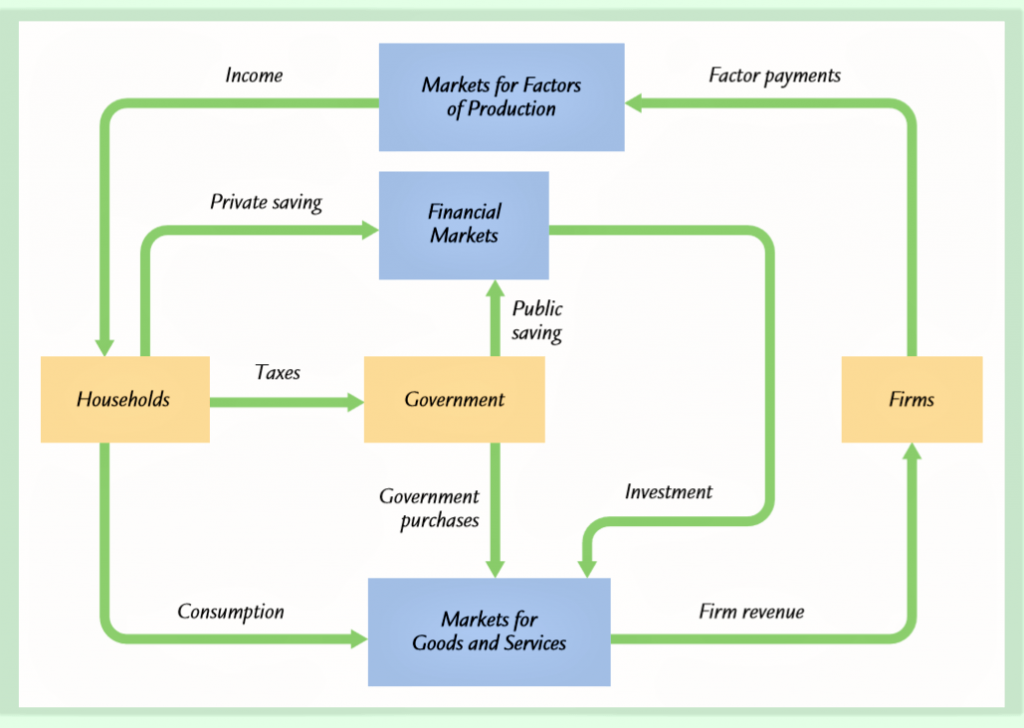


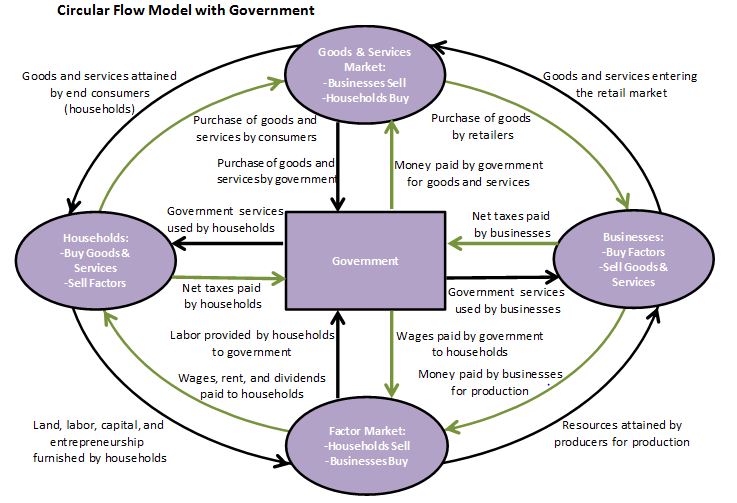

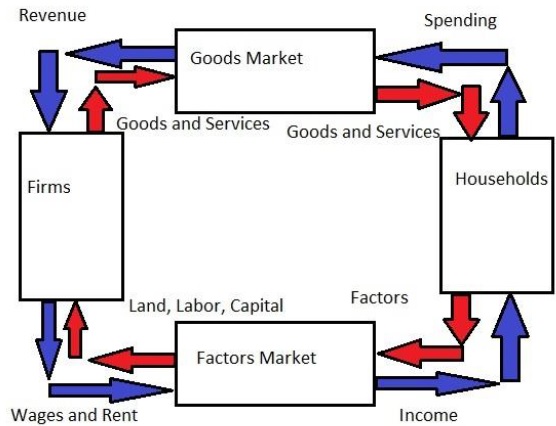

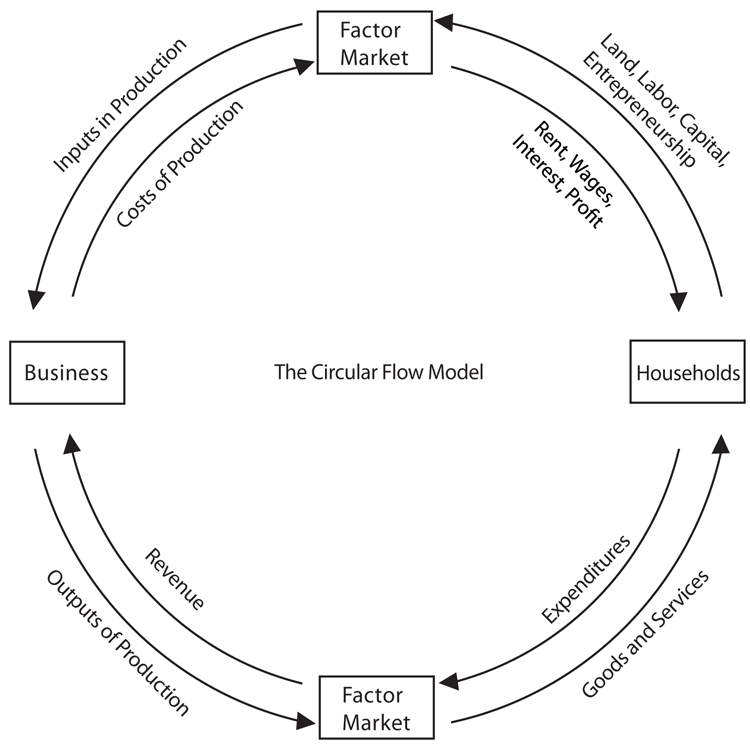

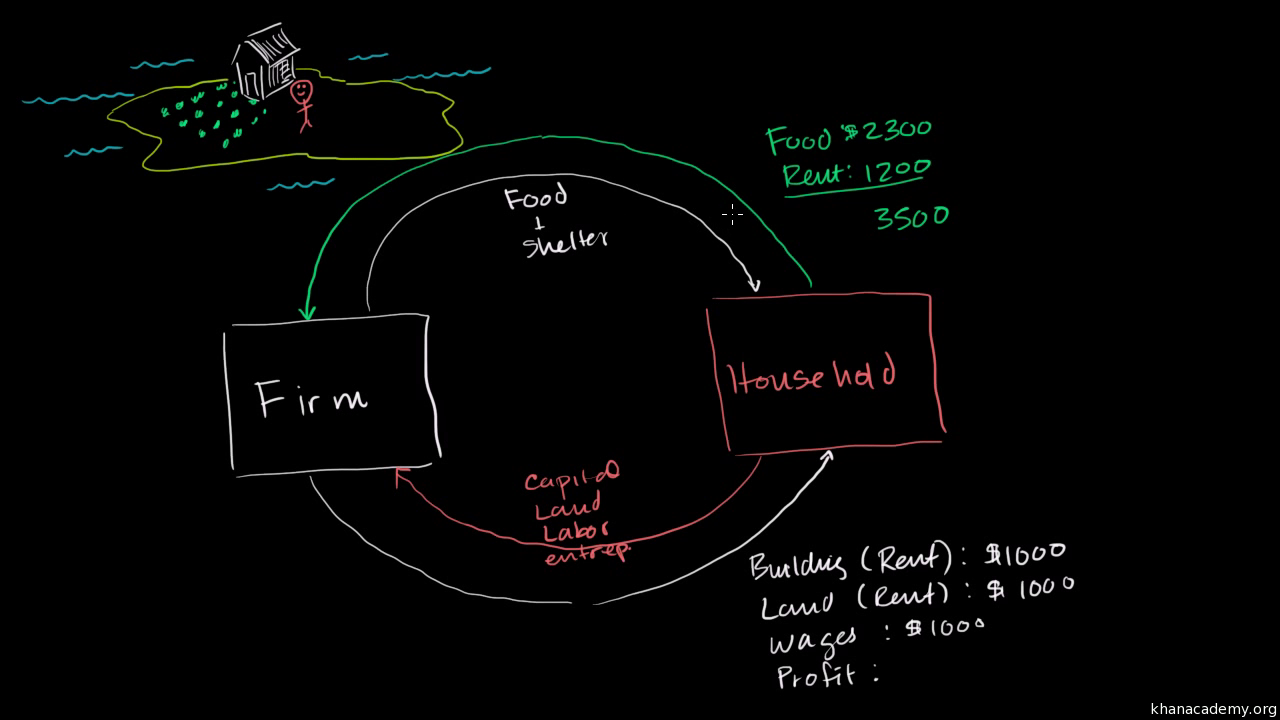


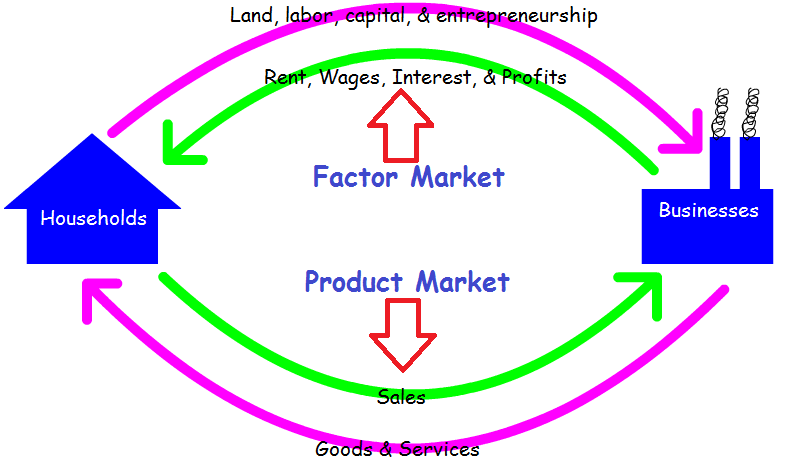
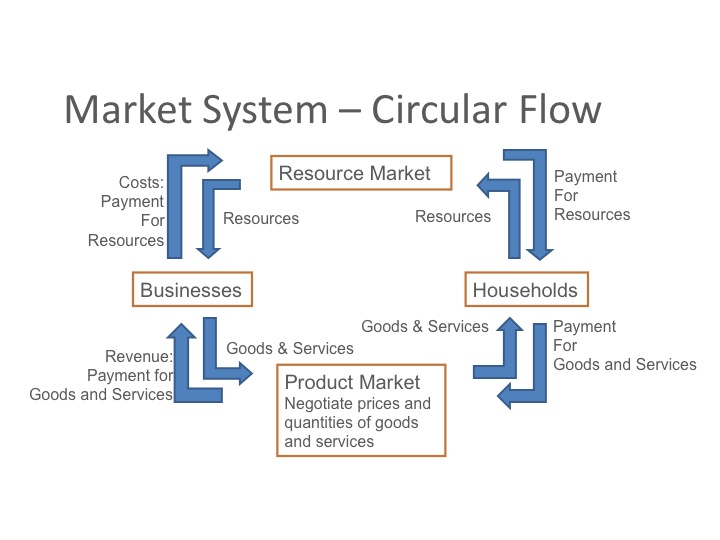
Comments
Post a Comment